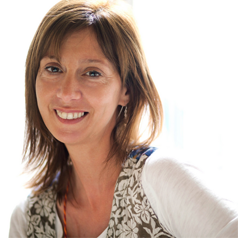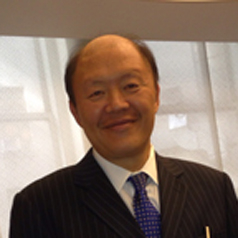FSBA – Florida Society for Bioenergetic Analysis


This is a simple exercise that can be done daily. It can give you more body awareness and help with your grounding.
Instructions:
1) Stand with your feet aligned with your hips.
2) Make certain your feet are parallel, belly is relaxed and let out, and pelvis is in a relaxed position.
3) Close your eyes and check your knees. Are they slightly bent or locked in place?
4) No matter your answer, experiment with slowly bending and straightening your knees.
5) Breathe deeply. Inhale as you straighten and exhale as you bend.
6) Do this about 10 times.
7) Go back to a standing position and feel your feet. Keep your legs slightly bent and just breathe.
8) Check in emotionally to see how you are feeling. Are you happy, sad, calm, angry? Just take note with no judgement.
Note: Many of us walk around with locked knees. Our knees are supposed to be shock absorbers but cannot do this if we do not stand correctly. If it was strange for you to stand with your knees slightly bent, then ask yourself: What am I bracing for? Where have I lacked support in my life?
Being in emotional pain hinders our lives. It affects our relationships, our job and our level of joy. This is why many of us seek therapy. So we go into a therapist’s office and we talk, we cry, we feel better (hopefully) and we leave. This is an important part of healing and growth.
But now what? We need the healing to integrate into our lives outside of therapy. We need to start feeling and seeing a lasting change in ourselves. This is done through integration. It is the process of learning that once our past is healed, we can move forward in our lives and allow this healing to continue to serve us by not repeating old patterns, being compassionate with others and ourselves, and allowing our body the freedom to breathe, move and feel.
Silvina Henriquez is a licensed psychologist in Argentina and a certified bioenergetic therapist. John Yong is an attorney in New York City and has been involved in bioenergetics for over 30 years. He studied under Frank Hladky and Alexander Lowen.
Silvina and John led a bioenergetics training on integration recently at the farmhouse headquarters of the Florida Society of Bioenergetic Analysis in Alachua, Florida. When it was over, they discussed integration with trainee Kelly Nenezian.
| Integration in Therapy |
All therapeutic methods strive for integration. Cognitive Behavioral Therapy uses thought changing methods to change behaviors. Person-centered therapy allows patients to find the meaning of different aspects of themselves; this creates better understanding and integrates this understanding into their lives.
Bioenergetic therapy is unique because it strives to integrate the mind and body in a way that promotes deep healing. By healing past trauma in the mind and releasing muscular tension, feelings change. Changes in life soon follow.
According to Silvina, “The therapeutic goal is to integrate the ego with the body and its striving for pleasure and sexual fulfillment.”
John said “Integration means doing enough of your own work. It usually takes many years to clear your issues and somewhat free you from your fate. I use the word ‘fate,’ in the same sense that Dr. Alexander Lowen did in his book Fear of Life. It’s the unconsciously held energies and trauma that fuels the drama that clients replay to try to resolve their inner feelings.“
| The Roadblocks |
Silvina said that in Alexander Lowen’s biography he discussed the importance of integration. He said that this was what he worked on his entire life for himself and his clients. “His conception of bioenergetics as an adventure in self-discovery — and an attempt to understand the human personality in terms of the body and mind — has a strong meaning and produces powerful results.”
“Lowen also explored the impact of our culture as a force that has a strong impact in our Ego.” The ego is an important part of integration. If the ego is too damaged, it negatively impacts integration and limits the benefits of therapy. Damage to the ego can cause a person to be afraid of feeling, which greatly inhibits the integration process.
John believes strongly in the power of physical experience over abstract theory when it comes to integration. “Many people go through therapy without real change,” he says. “They talk about their problems but don’t really work on them, like a Woody Allen character.”
An analogy he uses is learning to shoot a basketball. He says you can hear or read about what kind of rotation to have, the ball’s release from the fingertips and the arch of the elbow. But this is all theoretical – you can’t really learn how to shoot a basketball until you practice shooting. Therapy is the same, he says. “Until you can feel the emotion by crying, screaming or hitting, you can’t express the feelings that are locked up inside.”
| Integration in Bioenergetics |
Bioenergetic therapy has very specific aims for integration. Silvina says that integration includes memories, feelings, the heart, mind, pelvis, and spirituality. Bioenergetics is different from talk therapies because we strive to integrate the mind AND the body.
“We do this by working with exercises, breathing, grounding, relationship, and also integrating the repressed memories and feelings,” Silvina says.
While the repression of a memory is a psychological process, suppression of feeling is a physical one. It’s accomplished by deadening a part of the body and reducing its movement to diminish feeling. Suppression entails the development of chronic muscular tension in those areas of the body where the feeling would normally be felt.
“If we view integration as only a psychological process,” Silvina says, “our body is still carrying the dead weight of our past, and we are still restricted.”
Recognizing that integration is a mind-body process allows for more freedom in one’s life. “Bioenergetic analysis is a process where we become more alive by this integration of memories and feelings. Repressed memories and feelings are hidden in chronic muscular tensions, shallow breathing, difficulties in connecting with others and first of all (connecting) with oneself.”
Psychological aspects of a trauma may be talked about in traditional talk therapy — and sometimes even felt. Even so, the chronic muscular tension may still exist, limiting the life of the body. People who can integrate change into the mind AND body have more aliveness and joy in their daily lives.
“Bioenergetic analysis is a process where we become more alive by the integration of memories and feelings. Repressed memories and feelings are hidden in chronic muscular tensions, shallow breathing, difficulties in connecting with others and first of all (connecting) with oneself.”
Kelly spoke with John Yong and Silvina Henriquez about issues they discussed during the training for bioenergetic therapists. The patient may have blocks preventing integration, but the therapist can also inhibit the integration process.
John said that the therapist’s own narcissism can affect the process. “A therapist’s narcissism is that feeling of inadequacy that causes the therapist to have to prove that they are in control and/or to show off what they know and how skilled they are. Many times, the therapist is not aware of this inadequacy or the need to prove himself.”
When this occurs, we limit the patient’s therapeutic process in a big way. “The key to successful therapy,” John says, “is to follow and hold space for the client.”
We cannot know what the client needs no matter how much experience we have. Watching John and Silvina work showed masterfully the process of letting the client lead. They have been involved in bioenergetic therapy for many, many years and still do not presume to know more than the client in front of them.
John stressed the importance of knowing about your own narcissism as a therapist. “When we are aware of it, then we can be conscious and not have to do something.“ By managing our own need to fix someone to prove we are worthy of their money and time we can allow their body to fix itself. The true work is seemingly the need to learn to do less rather than to learn to do more.”
Silvina offered insight into integration on the part of the therapist.
If we aren’t supposed to do too much, are we supposed to just allow the client to do as they please and hope for the best? No. We are to watch the body as therapists. Silvina said that we can see integration of the work in the client’s body.
“Watch the deepening of the breathing,” she says. “Allow the chest to expand, inhale and exhale pause, and feel. Then chronic muscular tension decreases.” By watching for these signs in the body we can do less but learn more about the client’s integration process.